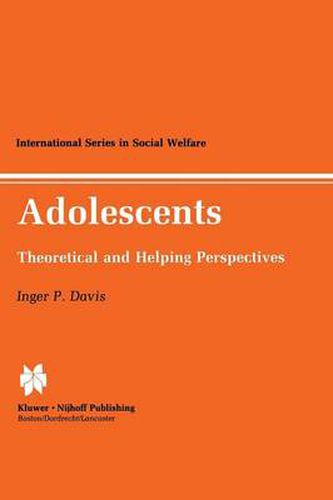Readings Newsletter
Become a Readings Member to make your shopping experience even easier.
Sign in or sign up for free!
You’re not far away from qualifying for FREE standard shipping within Australia
You’ve qualified for FREE standard shipping within Australia
The cart is loading…






This title is printed to order. This book may have been self-published. If so, we cannot guarantee the quality of the content. In the main most books will have gone through the editing process however some may not. We therefore suggest that you be aware of this before ordering this book. If in doubt check either the author or publisher’s details as we are unable to accept any returns unless they are faulty. Please contact us if you have any questions.
This book deals with ways of helping families cope with the difficulty of rais ing adolescents. Professional social workers - along with other human ser vice professionals - encounter these families in numerous settings: child welfare and family service agencies, hospitals, schools, community mental health clinics, residential treatment centers, juvenile halls and detention centers, recreational and vocational training organizations, and many others. While families from all walks of life may be found in these settings, families who have suffered the additional stresses of poverty, discrimination, and the consequences of physical and mental illness are commonly overrepresented. Even under the best of circumstances, the adolescent years often put the strongest family structures to the test - sometimes to the breaking point. A recent national study of over one thousand average, middle-income, two parent families reviewed the strengths, stresses, and satisfactions of the family life cycle (Olson and McCubbin 1983). As many would expect, families with adolescents were found to experience more stress and lower levels of family adaptability, cohesion, and marital and family satisfaction than any other developmental stage. The families with adolescents who fared best were those with such marital resources as good communication and conflict resolution skills, satisfying sexual relations, and good parent-adolescent communication.
$9.00 standard shipping within Australia
FREE standard shipping within Australia for orders over $100.00
Express & International shipping calculated at checkout
This title is printed to order. This book may have been self-published. If so, we cannot guarantee the quality of the content. In the main most books will have gone through the editing process however some may not. We therefore suggest that you be aware of this before ordering this book. If in doubt check either the author or publisher’s details as we are unable to accept any returns unless they are faulty. Please contact us if you have any questions.
This book deals with ways of helping families cope with the difficulty of rais ing adolescents. Professional social workers - along with other human ser vice professionals - encounter these families in numerous settings: child welfare and family service agencies, hospitals, schools, community mental health clinics, residential treatment centers, juvenile halls and detention centers, recreational and vocational training organizations, and many others. While families from all walks of life may be found in these settings, families who have suffered the additional stresses of poverty, discrimination, and the consequences of physical and mental illness are commonly overrepresented. Even under the best of circumstances, the adolescent years often put the strongest family structures to the test - sometimes to the breaking point. A recent national study of over one thousand average, middle-income, two parent families reviewed the strengths, stresses, and satisfactions of the family life cycle (Olson and McCubbin 1983). As many would expect, families with adolescents were found to experience more stress and lower levels of family adaptability, cohesion, and marital and family satisfaction than any other developmental stage. The families with adolescents who fared best were those with such marital resources as good communication and conflict resolution skills, satisfying sexual relations, and good parent-adolescent communication.